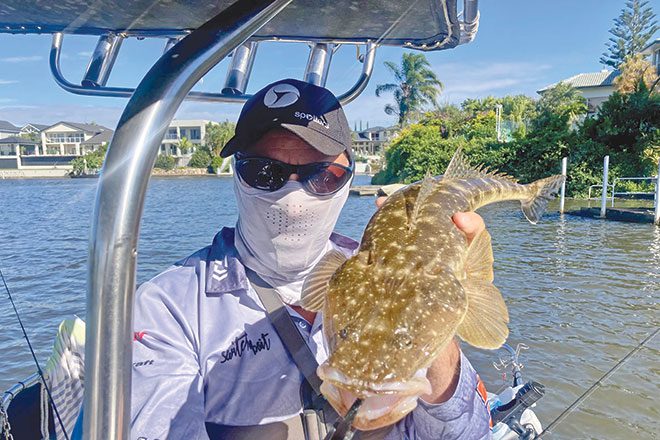Hi everyone, can you believe it… June already, wow! Flathead trolling
Not that I’m complaining – it is one of my favourite months to fish the Gold Coast estuaries. Flathead trolling
Species on offer include squid, flathead, tuskfish, sand whiting, winter whiting, flounder, squire, bream, tarwhine and many more. Flathead trolling
This month I’ll focus on some flathead trolling tips.
Flathead are a fish we never tire of catching – they can be lazy fish to fight but so often their strike is ferocious.
We catch a lot of flathead on vibe lures and soft plastics, but there are times when trolling hard-body minnow lures will out-fish everything else – on windy days when it’s hard to cast as an example.
Brad Smith has long been a master of estuary trolling and has taught me everything I know, but we both learn new things all the time.
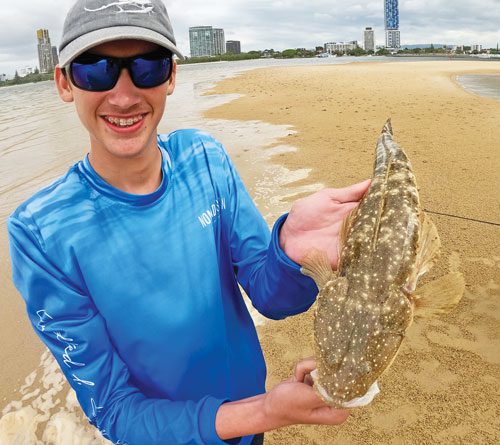
To troll for flathead, you’ll ideally need a 6’6″, 2-4kg spinning or baitcast rod and reel – 2500 size spinning reels do the job well.
We use about 100m of monofilament line backing, then top shot with PE 0.6 8-strand braided line.
The Japanese multi-coloured ones are the best for trolling, as you can easily measure how far you want the lure out.
Seaguar is a brand we prefer and use a lot for trolling.
You then need to tie on about 1m of 6-8lb fluorocarbon leader to the end of the braid with an improved Albright knot, then tie the lure on directly, with no swivel clip.
We have tried and tested many lures over the years and rounded them down to a few favourites.
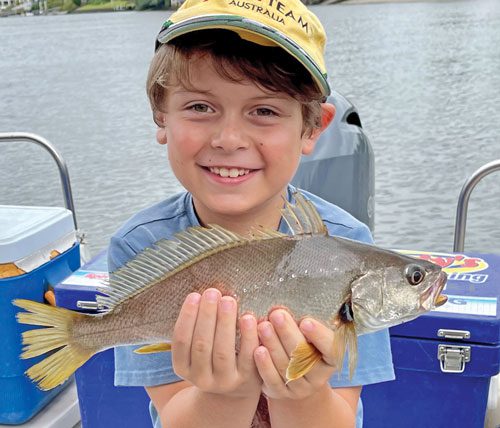
Pontoon 21 Crackjack 48mm SP DR
These little beauties swim to about 1.8m deep, making them ideal for shallower flats.
They catch a lot of flathead big and small, and all sorts of by-catch.
Brad’s favourite ever lure.
Comes in a range of dynamic colours.
The best colours are Bloody Tiger Prawn, Spanish Red, Green Tiger Prawn, Ghost Tiger Prawn and Bleeding Tiger Prawn.
Hurricane Slam 47
These lures dive deep – reaching close to 4m down when trolled with the tide.
Stand out colours are Demon Suji, Natural Prawn and Natural Minnow.
Daiwa Infeet Spike 44 EXDR
A new release that we have only recently started using, these gems catch a lot of fish when trolled – diving 3.5m deep.
Stand out colours are Brown Suji, Suji Berry and Sand Crab.
Trolling the edges of sand banks and on flats works very well.
Use the shallower divers on the shallower side and deeper divers on the other side of the boat.
Always check the lures are swimming straight before you let them out.
To tune them, bend the tow point very gently the opposite way to the direction they’re swimming.
Then let them run out the back of the boat with the motor just in gear and around two-knots speed.
It is essential for the lures to be tapping bottom, so keep a close eye on the rod tips, allowing the lures further back to get deeper.
Remember to keep the drag light enough to withstand the strike from a bigger fish.
Always troll with the tide if possible and if the lures catch weed and stop swimming, wind them in immediately or they won’t catch fish.
Trolling is a great way to locate schools of feeding flathead.
If you get multiple strikes in an area, repeat the run.
The fish will often keep moving with the tide, so keep trolling to find them again.
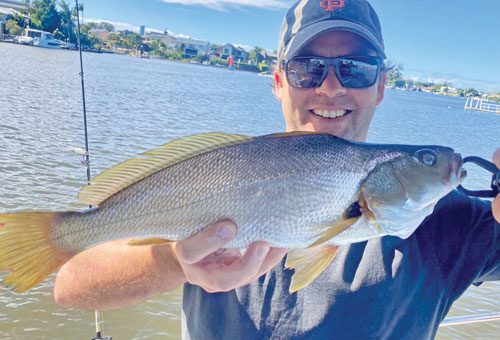
Besides flathead you will often catch trevally, whiting, bream and tailor when trolling in winter.
Keep checking that the lures are still swimming straight after catching a few fish.
Every day different colours work best, so keep trying various colours to crack the code.
Often solid red and gold colours will work during a dirty-water run-out tide or cloudy day, while on the opposite end of the scale, you’ll find more neutral and transparent-coloured lures work best on calm days and clear water.
Place the rods in trolling rod holders out to the side so that the rod tips are close to the water – to get the lures swimming deeper.
You can hold the rods while trolling but don’t strike too hard on a hook-up because the boat and fish are already moving in opposite directions.
Be careful handling flathead in a landing net – they will thrash wildly, so use long-nose pliers to gently remove sharp treble hooks from their mouths.
Always keep an eye on your fish finder to learn your local depths and so you know where the best spots to troll are.
Depths ranging from 1-4m are ideal.
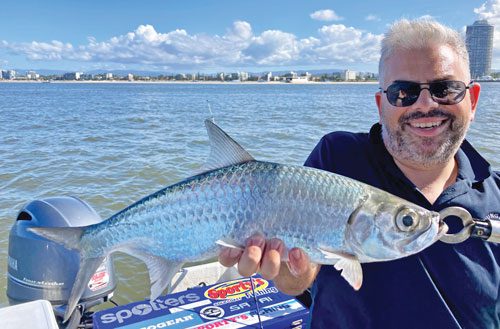
Also look for signs of bait on your finder, which show as patches on the screen – this can indicate where flathead will lie to ambush food.
If you are using the deeper divers and travel over a shallower bank, bring the lures in closer to the boat so they don’t plough into the bottom too much.
When using shallower divers and there is a bit of a drop-off, let more line out to get more depth.
A big part of trolling is paying attention constantly, it’s not a set and forget method.
Occasionally something works that shouldn’t, so don’t be afraid to experiment with lure colours.
If you haven’t tried this deadly technique, get out and have a go.
All you need is a kayak or small boat to have loads of fun!
To book on a charter with myself or Brad, or if you have any fishing related questions, visit goldcoastrivercharters.com, SMS 0432 990 302 or email fishingwithclint@gmail.com, or find us on Facebook at Brad Smith Fishing Charters.
 Bush ‘n Beach Fishing Magazine Location reports & tips for fishing, boating, camping, kayaking, 4WDing in Queensland and Northern NSW
Bush ‘n Beach Fishing Magazine Location reports & tips for fishing, boating, camping, kayaking, 4WDing in Queensland and Northern NSW

